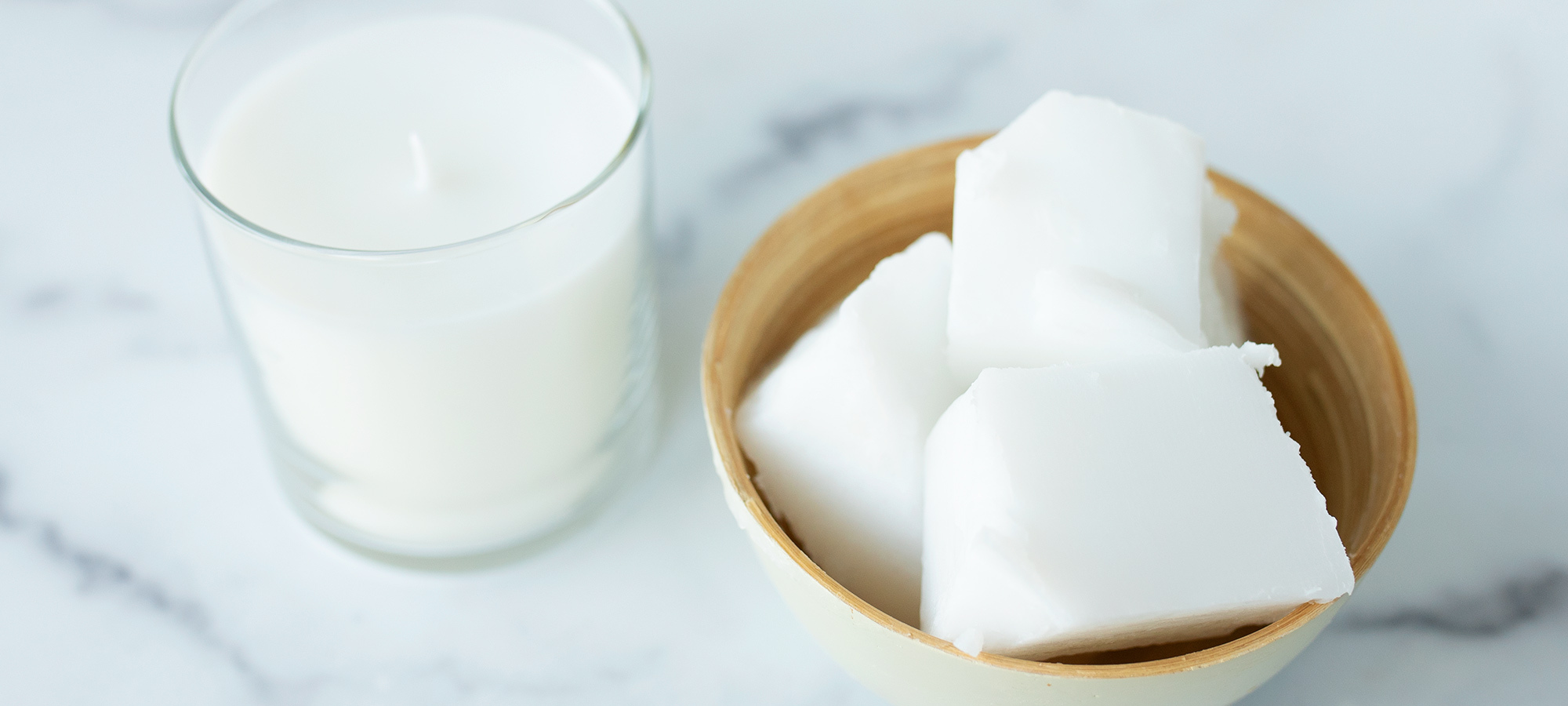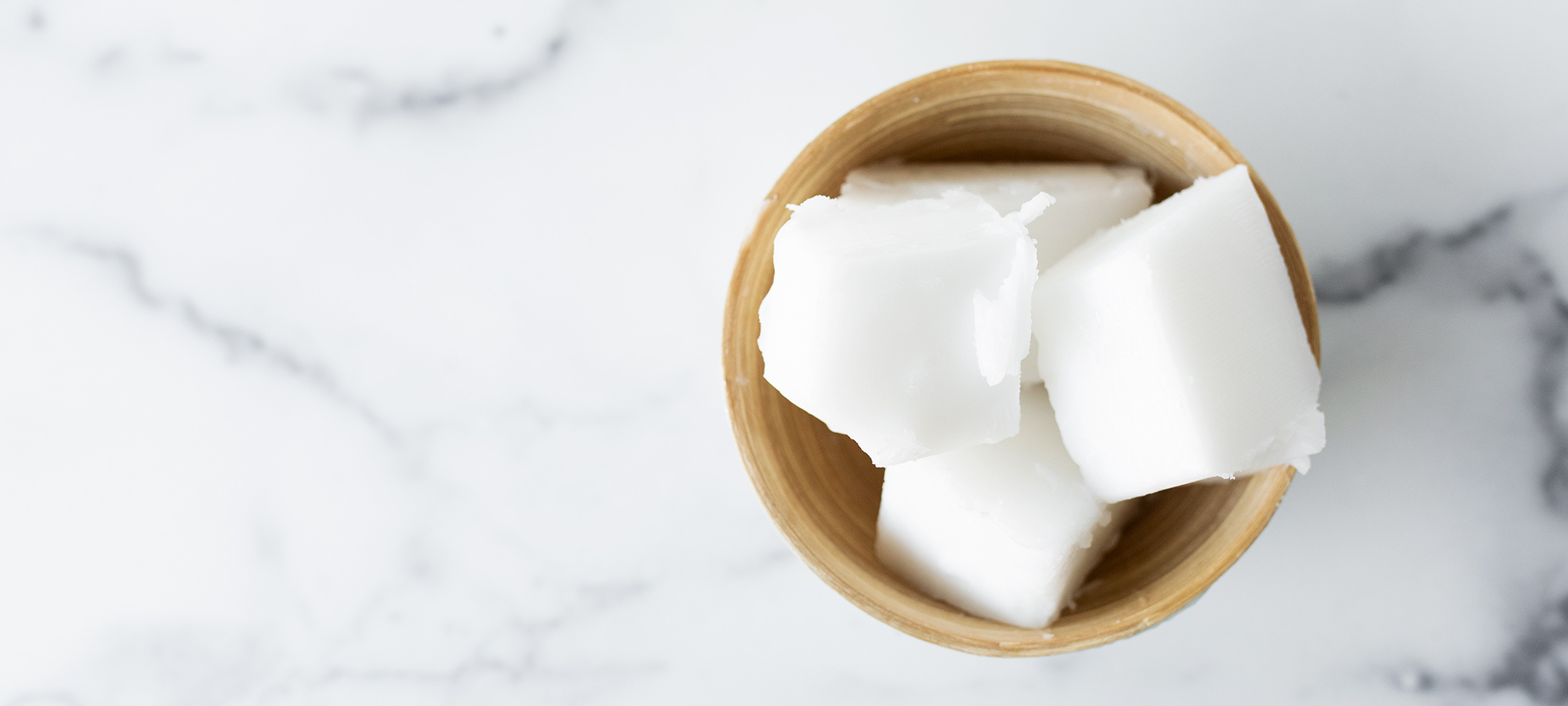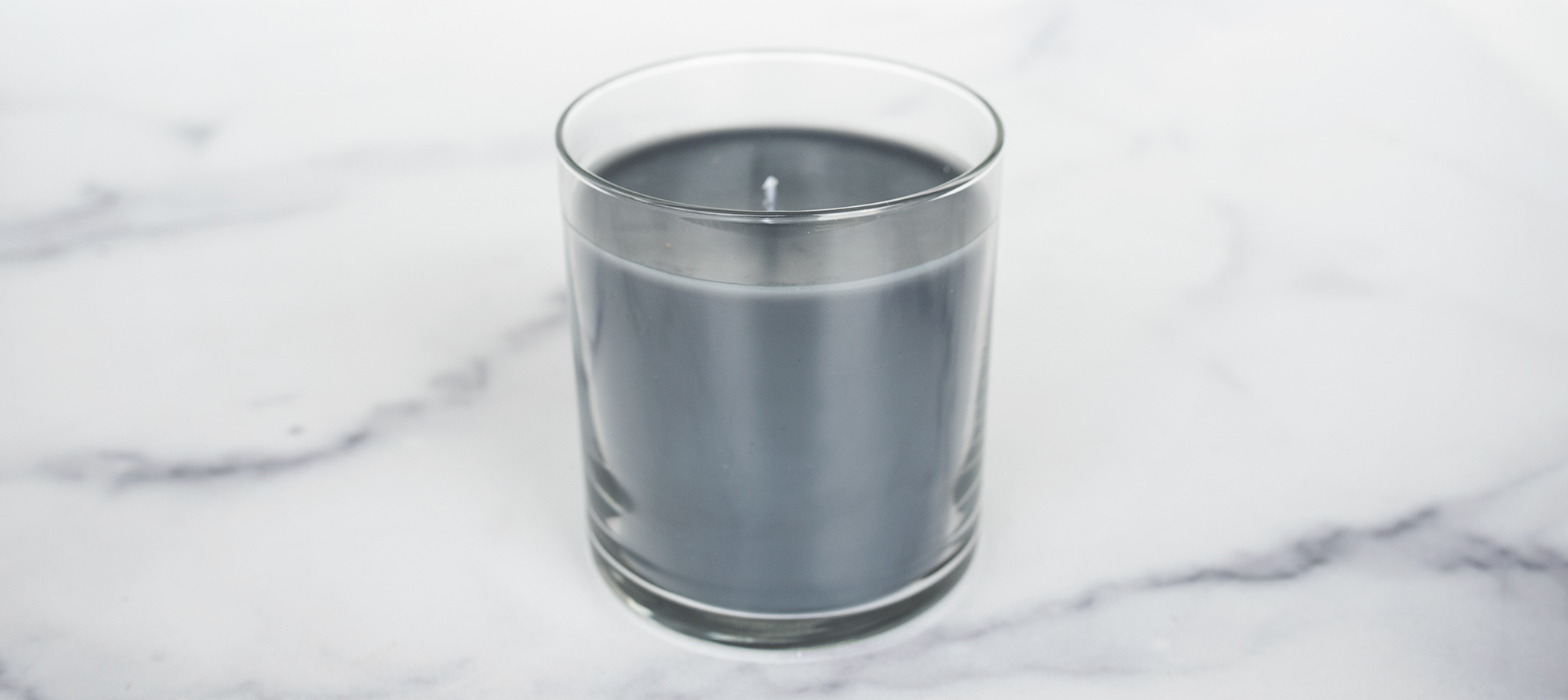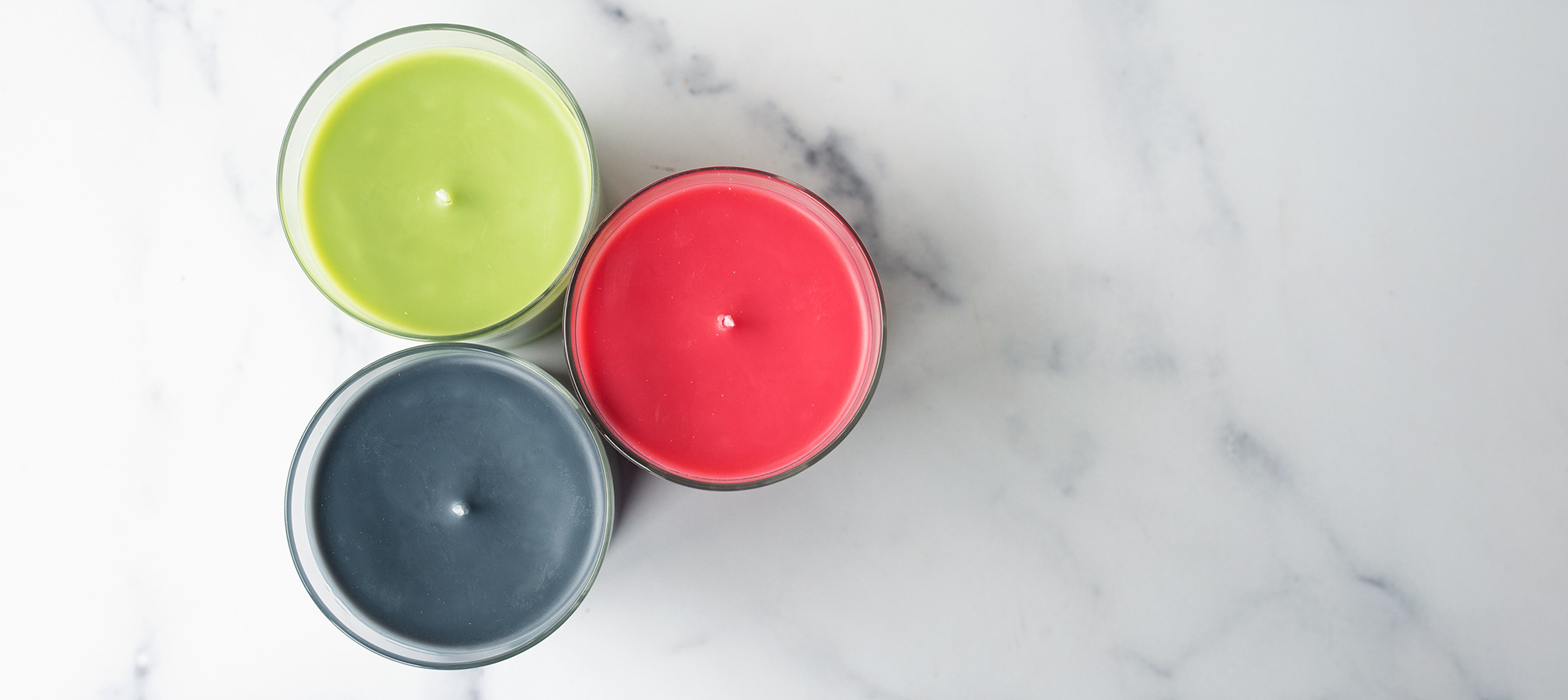LAB NOTES: Paraffin Container Wax (MP-117)

Our testing process
We divided our testing into three parts:
- Aesthetics: We tested for adhesion, shrinkage, and color issues.
- Fragrance Performance: We looked at fragrance solubility, retention, and cold and hot throw performance.
- Burn Performance: We tested various wick series and sizes to find the best burn.
For the fragrance testing segments, we used White Tea, Cranberry Apple Marmalade, and Very Vanilla fragrance oils. They have very different densities, viscosities, and ingredients. We hoped the variation would reveal potential solubility and burn issues.
General overview
Application: Containers and Tea lights
Recommended Fragrance Load: 6-10%
We are excited to bring this paraffin container wax to the handcrafted market! It is typically reserved for large manufacturing companies as a private label wax. This wax is not specific to CandleScience, but let’s just say you’ll be using the same wax as some big brand name, high-end candle manufacturers.
The wax comes in slab form, is soft, and slightly sticky to the touch. It is easy to cut up into smaller pieces with a knife, but we recommend wearing latex or nitrile gloves while handling to keep your hands clean. It has a nice creamy white appearance that provides a semi-gloss finish to candles. It does have a characteristic odor that can become a little stronger when melting; it completely disappears in candle form (including unscented candles).
Through our testing process, we found this wax to be a little different than other paraffin waxes we carry. It performs most closely to the IGI 4630, and can be a great alternative to that wax. It has minimal shrinkage, unlike most paraffin waxes, making it a good blending wax as well.

Aesthetics
Surface and glass adhesion
We noticed while the wax melts it forms bubbles throughout the process. When we heated the wax to 200ºF (93.3°C), the bubbles remained. We cooled the wax to 185º (85°C) to add the fragrance and still saw bubbles. Even as we poured test candles we saw bubbles coming up to the surface. These bubbles are caused by air that assists in the slabbing process. It is quite common in paraffin waxes and will not affect your finished candles.
We tested pour temperatures from 155º-170ºF (68.3°-76.7°C). After 24 hours, the surface of all the candles was perfectly smooth and the candles poured above 160ºF (71.1°C) had great glass adhesion. The candles poured below 160ºF (71.1°C) showed some jump lines (rings that form when the wax sets up too quickly as the candle is poured.) We recommend pouring at 170ºF (76.7°C) for the best glass adhesion. Despite all the bubbles we saw in the poured candles, all of the bubbles escaped before the cooling process finished. Allowing your candles to cool naturally at room temperature will ensure that you get great glass adhesion and perfectly smooth tops with no sink holes or shrinkage.

Coloring
We tested a variety of liquid dye colors in this wax, including Key West Green, Red, and Black. We heated the wax to 190ºF (87.8°C) then added our liquid dye. The dye mixed in easily without separation. The Key West Green and Red were used at 6 drops per pound (454 g) and produced vibrant medium shades of color. We wanted to see how Black was affected by the opaque, bright white color of the wax, Black is always very difficult to achieve in any wax since your base color is white or off-white. We added 12 drops (the maximum we recommend using to avoid the odor of the dye coming through in the candle) to our melted wax and as expected it produced a light to medium shade of grey.

Fragrance performance
Solubility
We melted the wax to 185ºF (85°C) and then added the fragrance oil. The fragrance was incorporated easily, and we didn’t see signs of separation. We did test Very Vanilla fragrance at 12% and found that it would not incorporate well and the finished candles had oil pooled at the bottom. For best performance, we recommend using no more than 10% fragrance. We suggest testing at 6% initially, we were very pleased with the hot throw of all fragrances at this amount and did not find it necessary to add more.
Hot and cold throw
We checked the cold throw after only 12 hours and it was faint with all the fragrances we tested. After 2 days we checked again and all the candles were strong. We began hot throw testing after 3 days. All fragrances were strong at just 6%.
Even though this wax can hold more fragrance we did not find that adding more made a significant difference in the hot throw strength. We recommend starting with 6% fragrance and then gradually increasing the percentage until you find the amount that performs best for you.
Burn Performance
Wicking
When choosing a wick for paraffin waxes, we prefer the LX series as our starting point. It does not have a core or additional fibers woven in so it burns with a nice tight flame that helps minimize excessive soot when properly wicked.
Paraffin wax generally is “easier” to burn than vegetable based waxes like soy, and this wax is no exception. We found that even our smallest LX wicks were too big in some testers. We plan to add both the LX 10 and LX 12 in a 6” (15.2 cm) length to our line so that using smaller containers or double wicking a larger container will be an option.
MP-117 performed well in our tealight tests, but we don't recommend using this wax in glass or metal containers smaller than 1.75" (4.4 cm) for safety reasons. Our 2 oz Candle Tins became too hot, even when using an LX 10 wick.